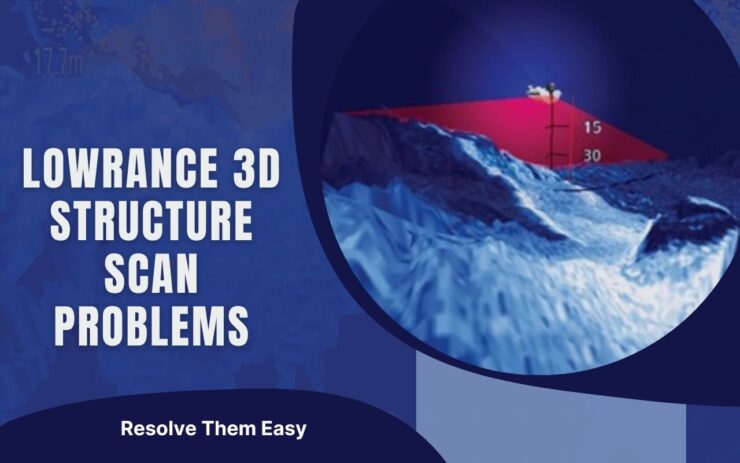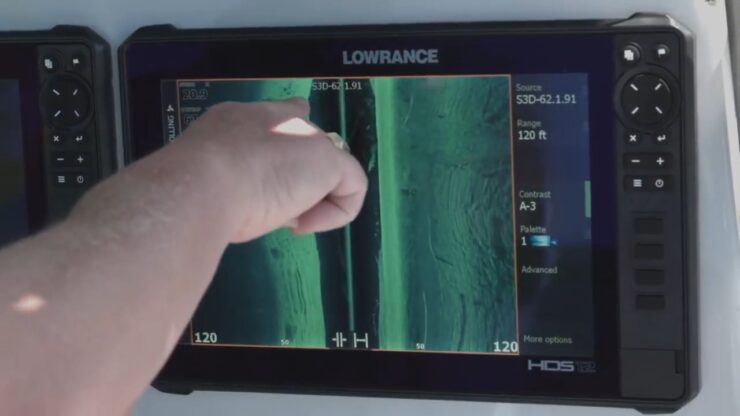Are you a fishing enthusiast searching for the best technology to help you catch more fish? Then you might be interested in Lowrance 3D Structure Scan. This advanced fishing technology has revolutionized the fishing industry by providing anglers with real-time 3D images of underwater structures and fish.
Table of Contents
ToggleWhat is Lowrance 3D Structure Scan?
Lowrance 3D Structure Scan is an innovative fish finder technology that uses advanced sonar to create detailed 3D images of the underwater environment. This technology utilizes a transducer that sends sound waves through the water and measures their reflections. The information gathered from these reflections is then used to create a 3D map of the underwater environment.
How does Lowrance 3D Structure Scan work?
Lowrance 3D Structure Scan uses a transducer that sends out sound waves in multiple directions. These sound waves bounce off objects underwater, such as fish and structures, and return to the transducer. The transducer then sends this information to the fish finder, which creates a 3D image of the underwater environment.
The 3D images provided by Lowrance 3D Structure Scan are incredibly detailed and can help anglers identify underwater structures such as rocks, logs, and vegetation. These structures are often home to fish, and by identifying them, anglers can target the areas where fish are more likely to be found.
But whether you are a new owner or a veteran, it’s quite normal to face some problems while operating the scanner.
Don’t know what to do about this problem? That’s alright, we got you covered on this topic.
So what are the Lowrance 3d structure scan problems?
Some common Lawrence 3D Scanner problems include the display not starting and improper 3D pictures.
Moreover, the software may not properly update.
If the problem is with the display, charging the battery, or performing a soft reset will fix it. A transducer properly installed can fix the problem as well.
Are you interested in learning more? We have all the details in our article, so keep on reading!
Some Common Problems of Lowrance 3d Structure Scan
Whether it is a Simrad or a Lowrance structure scanner, it’s common for scanners to have problems. Let’s have a look at the problems you might be having and how to solve them.
Display Won’t Start-Up
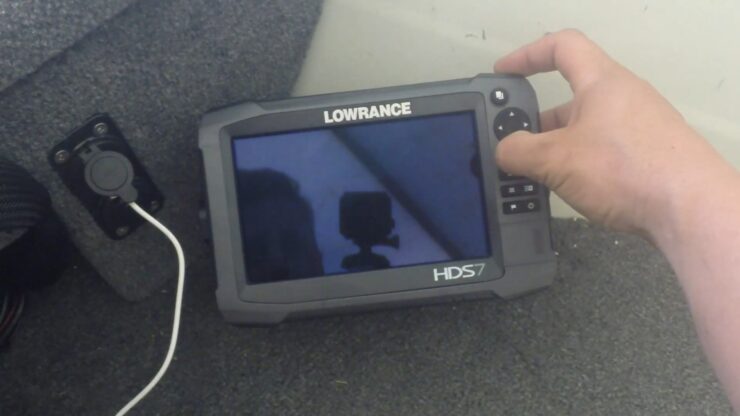
The boat’s scanner often shows a splash screen when taken to the water. It won’t go past the screen or do anything.
Solution
There are a few options for resolving this issue. Let’s see what can be done-
Charge the Battery
The first thing you should do is check the battery’s remaining capacity. If the battery is low, you need to connect it to a charger. But it should be a regular one. You must connect the negative and positive clips to the appropriate ports.
While the battery is charging, turn your unit on. The display should startup and move past the splash screen.
Check for Any Loose Connection
Check for loose wiring in the boat if your battery is completely charged. A loose connection might cause a scanning problem. It can be under the console where your unit is plugged in.
Check to ensure if the unit is properly and securely plugged in. Also, check and reconnect the field wires of the alternator field disconnect while you’re at it. When there is a power outage, these frequently come off.
Do A Soft Reset
If you are still getting only the splash screen, the next thing to do is a soft reset. In order to do so, first, disconnect the power. Then plug it back in again. Press and hold the page key while pressing the power button.
You will be hearing a beep sound at this point. Continue to hold the page key for another 10-15 seconds after this.
This will put your unit into a soft reset. After this, the display should come back on and work just as usual.
If your unit is still not operating, you should get professional assistance.
Transducer Problems
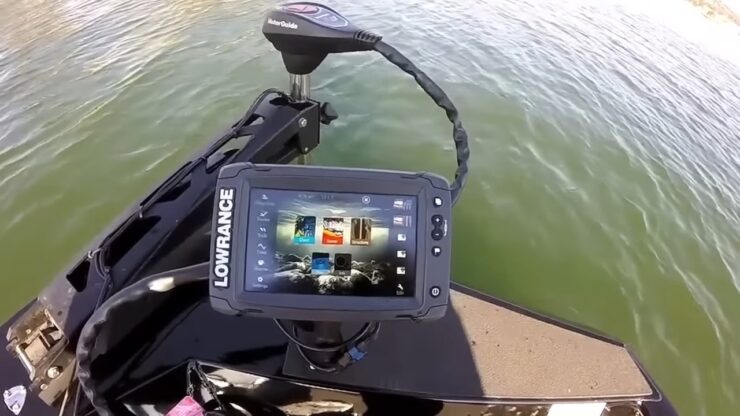
Sometimes even after the display is working properly the scanner doesn’t show the area as it showed in the commercial. This happens when your transducer is not installed properly or facing the wrong side.
While in the water, your boat might get hit by something that makes the transducer go up. It won’t be leveled with the boat anymore. This may cause the image problem as well.
And in other cases, water plants or debris might get stuck at the front of your transducer. This makes it hard to produce a better image.
Solution
The transducer needs to be installed parallelly with the bottom of your boat. Even a slightly tilted down may cause a huge difference to your imaging.
You should always install a high-quality transducer for better imaging results. On that note, we’ve compiled a list of some of our favorite transducers.
Updating Software
The structure scan updates are not automatic in Lawrence 3d.To make the update work properly, you must manually install it.
If you just add the new update to your micro SD card and put it in the scanner it won’t update by itself. Let’s check how you can update the system-
Solution
First, power on your whole system during the process. Insert the micro SD card into the scanner’s bottom slot. Then to the storage option.
Check the folder where you have put the new updated version. Click on the file, and choose the upgrade option.
At this point, it’ll show the upgrade file. The ‘Start Upgrade’ option will appear at the bottom after you have picked the file. Select that button and it will start upgrading.
Wait a few more minutes if it shows 100% but the status is showing ‘rebooting module’. Now after rebooting is complete, turn off the scanner. Then, after 1 minute, turn it back on. The new update should start working after this.
Make sure after installing, the displayed software version is the new updated version.
We genuinely hope we were successful in resolving your scanner problems. And now you can go back to fishing again but make sure your outboard motor has not been sitting for too long.
Performance Problems
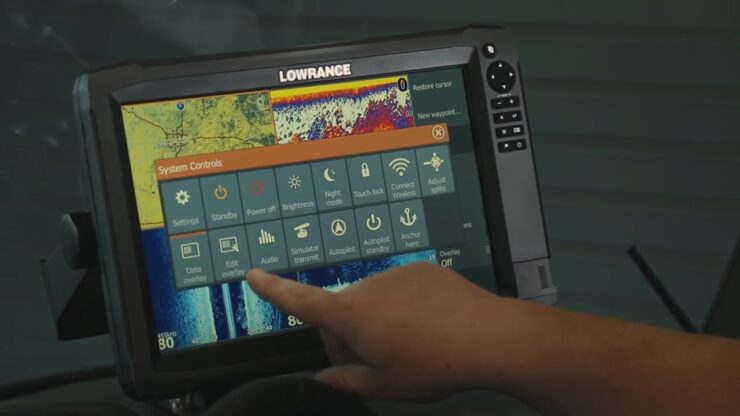
Another common issue that anglers encounter with their Lowrance 3D Structure Scan is performance problems. These can include:
- Interference – Interference from other electronics on your boat can cause poor performance and inaccurate readings. Make sure to keep your Lowrance 3D Structure Scan away from other electronics, such as radios and depth sounders.
- Low visibility – Poor visibility can lead to inaccurate readings and difficulty finding fish. Make sure to adjust the unit’s sensitivity and range settings to improve visibility.
- Incorrect transducer settings – Make sure the transducer is set to the correct frequency for the water conditions you are fishing in. The wrong frequency can lead to poor performance and inaccurate readings.
- Outdated software – Outdated software can lead to poor performance and inaccurate readings. Make sure to keep your unit’s software up to date by regularly checking for updates on the manufacturer’s website.
If you are experiencing performance problems with your Lowrance 3D Structure Scan, try adjusting the unit’s settings or updating the software. If the problem persists, contact the manufacturer for further assistance.
Solution
- Interference – To avoid interference from other electronics on your boat, try to keep your Lowrance 3D Structure Scan unit away from radios and other electronics. If interference persists, try moving the unit to a different location on your boat or adding an electromagnetic interference (EMI) filter to the power supply.
- Low Visibility – Adjusting the unit’s sensitivity and range settings can improve visibility. Additionally, try adjusting the contrast, brightness, and color settings to achieve optimal visibility.
- Incorrect Transducer Settings – Make sure the transducer is set to the correct frequency for the water conditions you are fishing in. The wrong frequency can lead to poor performance and inaccurate readings. Additionally, make sure the transducer is installed correctly, facing straight down into the water.
- Outdated Software – To keep your unit’s software up to date, regularly check the manufacturer’s website for updates. Follow the manufacturer’s instructions for updating the software.
Maintenance Problems
In addition to installation and performance problems, anglers may also encounter maintenance problems with their Lowrance 3D Structure Scan. These can include:
- Dirty transducer – A dirty transducer can lead to poor performance and inaccurate readings. Make sure to regularly clean the transducer with a soft cloth and water.
- Damaged transducer – A damaged transducer can lead to poor performance and inaccurate readings. Make sure to regularly inspect the transducer for any signs of damage, such as cracks or scratches.
- Dead battery – A dead battery can cause the unit to shut off unexpectedly or not turn on at all. Make sure to regularly check the battery level and replace the battery as needed.
If you are experiencing maintenance problems with your Lowrance 3D Structure Scan, make sure to regularly inspect and clean the transducer and check the battery level.
Solution
- Dirty Transducer – To clean a dirty transducer, use a soft cloth and water. Avoid using harsh chemicals or abrasives, as these can damage the transducer.
- Damaged Transducer – If you notice any signs of damage to the transducer, such as cracks or scratches, contact the manufacturer for assistance. Do not attempt to repair or replace the transducer yourself, as this can void the unit’s warranty.
- Dead Battery – To avoid a dead battery, regularly check the battery level and replace the battery as needed. Additionally, ensure the battery is charged before each use.
FAQs
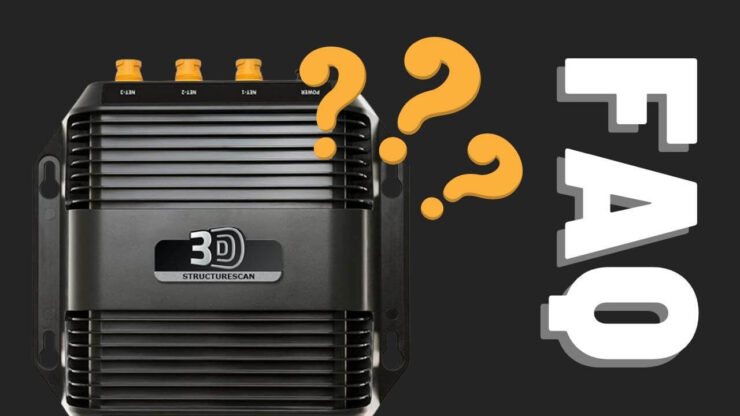
Are side scans any worth the cost?
Side imaging is a powerful tool that is well worth the extra money. You can quickly scan broad regions for critical locations, buildings, and the fishes you’re looking for using side imaging.
Is fish visible on down imaging?
Yes, it allows you to observe fish in great detail. Down imaging is one of the most cutting-edge fishfinder technologies available today.
If sonar detects something noticeable at the bottom, turn on down imaging as soon as possible to get a better view.
Which is better side imaging or down imaging?
For those who go shallow water fishing, side imaging is the best choice. And in the case of more vertical fishing, down imaging sonar is the right choice.
How deep does Lowrance structure scan work?
Up until that point, I had found Structure Scan to be most efficient in the Chesapeake Bay at depths of 40 feet or less. Nevertheless, its effectiveness seems to diminish as you go deeper.
What is the difference between sonar and Down Scan?
Due to the larger beam in all directions, standard or 2D sonar has a tendency to blend the returns together. While the Down Scan provides more information, it also requires a continuous forward motion for the beam to cover the lake or river’s bottom, much to way a light bar on a Xerox works.
Final Words
This leads us to the conclusion of our article. We hope you know all the Lowrance 3d structure scan problems.
Let us know if you liked the article and learned something new in the comments section below.
Until then, have a good summer!
I’m Liam Jackson, the proud owner and driving force behind KayakPaddling.net. Born somewhere in the expansive beauty of the United States, I’ve nurtured a lifelong passion for kayaking and fishing that has led me to explore the far corners of our nation’s waterways.
Related Posts:
- 10 Best Fish Finders Under $200 2024 - Top Affordable Picks
- 11 Best Fish Finder for Jon Boat 2024 - GPS Combo
- 16 Best Kayak For Beginners 2024 - Kayaking Adventure Gear
- Heavy Duty Fishing: 11 Best Rods And Reels For Big Fish 2024
- Pros And Cons of Mounting Transducer on Trolling…
- 20 Best Inshore Spinning Reels 2024 - Capturing All…

